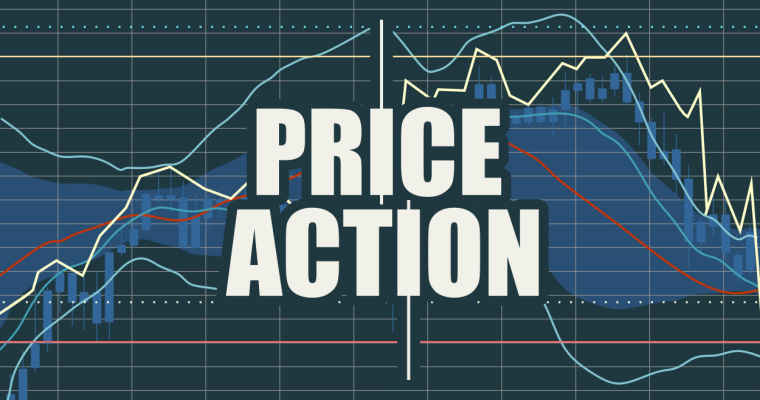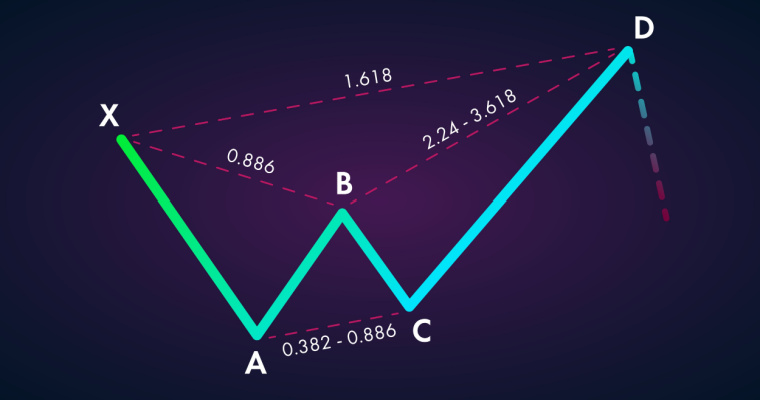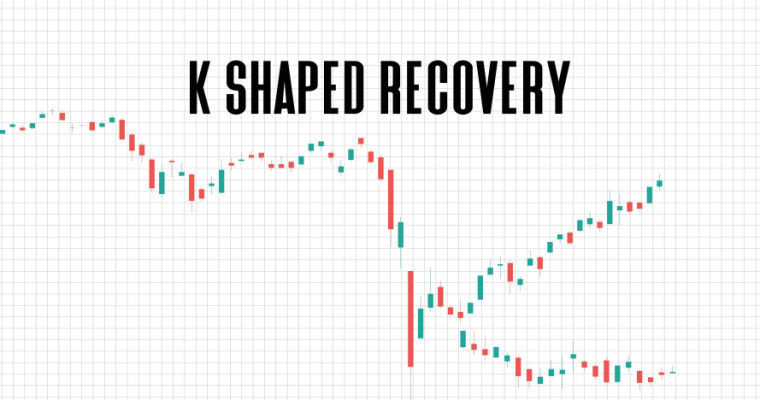Parabolic SAR Explained – Calculations and How it Works

Parabolic SAR (Stop And Reverse) catches possible trend reversals in asset price movements, allowing traders to plan their entry and exit. For traders already holding onto trades in the direction of price movement, it’s a signal to square off their trades. While for traders who are waiting to ride the trend reversal movement, it’s an entry point.
In this piece we have explained how Parabolic SAR works and how traders use it to their benefit.
What is Parabolic SAR?
It’s a technical indicator for giving early signals of upcoming trends. Not only does it help you ride the trend, but it gives you a potential exit level to make profits.
If you are already excited about the indicator, that’s not all it offers; the Parabolic SAR strategy is also useful in setting stop losses. Not the fixed ones but the trailing ones, i.e., trailing stop losses.
However, market knowledge is required to trade on signals given by parabolic SAR. Not only this indicator but every technical indicator out there is worthless unless the trader knows how to use them.
It’s a mechanical indicator and will produce signals all the time. Identifying the signals worth trading is a call that lies with the judgement of the trader. For instance, in a completely range-bound market, it won’t make sense to trade on any of the signals given by parabolic SAR because the indicator is not meant for range-bound or sideways markets.
How Does Parabolic SAR Work?
Parabolic SAR is plotted on the graph using a series of dots. The indicator plots a curved pattern on the price chart that runs along the price of candles. The positioning of the parabolic SAR curve with reference to the price candles generates signals.
Let’s take a deeper look at the signals-
- When the parabolic SAR dots are running above the price candles, it’s a bearish sign, i.e., the price might cool down.
- When the parabolic SAR dots are below the price candles, it’s a bullish signal, indicating a possible up move.
However, as traders, one must look, for instance, when the direction of dots changes.
i.e., when dots start to move above the price curve against the erstwhile downward movement or vice versa.
Because these changes in direction produce trading signals. The price rises during a bullish trend, and the parabolic SAR curve also accelerates in the same direction.
Now, the dots will stay below the price curve as long as the bullish trend continues.
The moment the dots cross above the price curve and start running above it, it signals a bearish trend reversal. It’s a cue for traders to square off their buying trades and enter sell trades.
Similarly, during a bearish trend, parabolic SAR curve dots will continue to stay above the price curve till the bearish trend is valid.
The movement of dots from above to below the price curve indicates a bullish trend reversal, suggesting that the downward movement is out of gas, and the price is preparing to increase.
When this happens, traders should exit their sell positions and may plan to enter fresh buy trades.
Also Read: What Is Relative Strength Index (RSI) in Stock Market and How to Calculate it?
Parabolic SAR Formula
We just learned the parabolic SAR curve either moves in uptrend or downtrend, as the case may be. Accordingly, we have different formulas for calculating uptrend and downtrend parabolic SAR.
Uptrend Parabolic SAR= Prior SAR + Prior AF (Prior EP – Prior SAR)
Downtrend Parabolic SAR = Prior SAR – Prior AF (Prior SAR – Prior EP)
Where
Prior SAR is the parabolic SAR of the previous period.
EP stands for extreme point and represents the extreme value attained in the trend. During an uptrend, it’s the highest value and lowest value during the downtrend.
AF stands for acceleration factor. It is assigned a default value of 0.02, which ranges to a maximum of 0.20.
Each time an extreme point is recorded, the acceleration factor gets accreted by 0.02.
It’s important to note that 0.02 is the default value; traders can change the default value and the accretion value per their needs.
The outcome of the parabolic SAR formula is plotted on the price chart as a dot. A series of such dots constitute a parabolic SAR curve.
We just learned the parabolic SAR curve either moves in uptrend or downtrend, as the case may be. Accordingly, we have different formulas for calculating uptrend and downtrend parabolic SAR.
Uptrend Parabolic SAR= Prior SAR + Prior AF (Prior EP – Prior SAR)
Downtrend Parabolic SAR = Prior SAR – Prior AF (Prior SAR – Prior EP)
Where
Prior SAR is the parabolic SAR of the previous period.
EP stands for extreme point and represents the extreme value attained in the trend. During an uptrend, it’s the highest value and lowest value during the downtrend.
AF stands for acceleration factor. It is assigned a default value of 0.02, which ranges to a maximum of 0.20.
Each time an extreme point is recorded, the acceleration factor gets accreted by 0.02.
It’s important to note that 0.02 is the default value; traders can change the default value and the accretion value per their needs.
The outcome of the parabolic SAR formula is plotted on the price chart as a dot. A series of such dots constitute a parabolic SAR curve.
Pros and Cons of using Parabolic SAR
Here are a few advantages of using the parabolic SAR strategy:
- Parabolic SAR helps traders capitalise the most of price action.
- The ability with which parabolic SAR produces trend reversal signals in trending markets is unprecedented.
- Parabolic SAR helps seize high momentum trades where the risk-to-reward ratio is favourable.
- Where most technical indicators don’t provide any insights on stop losses, parabolic SAR can be used to place stop losses and trailing stop losses.
However, there are a few drawbacks to using the parabolic SAR strategy:
- The SAR indicator works to its potential only when the market is trending; the moment the market goes sideways, parabolic SAR loses its efficiency.
- The technical indicator is often guilty of producing false signals when the markets are choppy or sideways.
- Parabolic SAR signals often lead to over-trading. Traders frequently take multiple traders when the parabolic SAR curve changes direction without any sizable continued movement.
Thus as a trader, you can write it down as a thumb rule to not solely rely on parabolic SAR for finding trading signals when the price movement is sideways. Rather, parabolic SAR can be one of the strategies you can deploy to make maximum gains.
Parabolic SAR Trading Strategies
The indicator works on a formula and continues to generate signals. However, not all the signals so generated can be trusted. You must have a strategy to trade upon signals generated by parabolic SAR; otherwise, it will flood your trading systems with false signals.
The Parabolic SAR Breakout Strategy
A clear trend is often expected after a breakout, provided a pullback is factored in. Parabolic SAR gives multiple breakout signals in a trending market. When the dots penetrate the price curve below, it’s a reversal signal.
To exploit the breakouts to the maximum, wait for the first pullback to happen once the pullback is completed, and trade in the direction of the original trend with a stop loss of the swing low created during the pullback.
For example, a stock is moving in an uptrend post a strong breakout. Wait for Parabolic SAR dots to move above the price curve. That signals the stock to enter a small pullback ( minor correction).
Enter into a bullish trade with the stop loss of the low stock price created in the pullback.
Double Parabolic SAR Strategy
The signals generated by the indicator change with the time frame selection. It’s not just the case with parabolic SAR but every other technical indicator. This strategy works on the two premises-
- Longer-term trends are more reliable
- Short-term trends can only be spotted in a smaller time frame
The double PSAR strategy uses two SAR curves simultaneously. One on a longer time frame( hourly or daily) and one on a smaller time frame (5 minutes, 15 minutes).
The idea is to trade on the signals generated by the smaller frame PSAR but only in the direction of the trend signalled by the longer-term parabolic SAR.
This reduces the margin of error, which is on the higher side, trading solely on the shorter-term PSAR.
When to Use Parabolic SAR in Crypto Trading?
Cryptocurrencies bring a whole new dimension to the trading floor. While traditional trading instruments follow a confined trajectory and are biased towards consolidation, cryptocurrencies are known for their wild movements. Movements of 5-10% in crypto trading are a normal sight.
Crypto trading can be extremely rewarding, given the number of opportunities you get as a trader. Parabolic SAR, as we discussed, works to its best in trending markets, and the crypto market is trending 9/10 days on average.
PSAR indicator, owing to its prowess in trending markets, is a common feature in every crypto trader’s system. Thus every time you spot a trend in the formation or continuation, you can apply the PSAR strategy to find out about its continuity or reversal and trade accordingly.
How to Trade using Parabolic SAR Indicator?
Following is a simple set of rules to trade parabolic SAR:
- Avoid range-bound markets and wait for trending markets.
- Enter a bullish trade when SAR dots penetrate the price curve on the downside.
- Enter a bearish trade when SAR dots penetrate the price curve on the upside.
- Place a stop loss at the price where SAR dots are placed. You will notice the dots only move closer to the current market price and never away from it as long as the trend is valid.
- Exit or reverse your trades when the SAR penetrates the price curve again.
Also Read: Stock Market Index – Importance, Need, Types & Selection
Final Word
Like every other technical indicator, parabolic SAR works on a set of predefined principles and is exposed to certain limitations. You cannot expect it to factor in all the likely triggers to affect the market.
That said, parabolic SAR enjoys a dominant position over other technical indicators for not being a biased indicator, and it equally signals to buy and sell trades. Secondly, the indicator provisions for stop losses and the SAR curve crossover gives definitive entry and exit points.
Traders can look to incorporate parabolic SAR into their trading systems along with other indicators after backtesting its signals on past market data.
FAQs on Parabolic SAR
Ans. It’s a lagging indicator, and it lags behind the price. Parabolic SAR only factors in the price changes and doesn’t predict the possible changes in price. For this reason, it’s often criticised to give late signals when most of the momentum is already over.
Ans. J Welles Wilder, Jr, The founder of the parabolic SAR strategy, suggested using the average directional index (ADX), which is a momentum indicator alongside parabolic SAR. Alternatively, moving averages on different time frames can also be used.
Ans. The SAR curve runs along the price curve. When the SAR dots crossover the price curve from the downside, it’s a bearish signal. Similarly, it’s a bullish signal when the dots crossover the price curve from the upside.
Ans. Refrain yourself from applying parabolic SAR strategy in choppy or sideways markets because, in such markets, parabolic SAR often produces false signals.
Ans. There’s no hard and fast rule for this. However, you can adopt the strategy of trading in the direction signalled by longer-term PSAR using signals of shorter-term PSAR.
Disclaimer
This article is solely for educational purposes. Navi doesn't take any responsibility for the information or claims made in the blog.

Customer’s Feedback
No comments found.Illiquid Stocks Guide: Definition, Examples, and its Working
Illiquid stocks are part of a long-term investment strategy that is appropriate for investors who a... Read More »What is Shooting Star Candlestick Pattern in Trading?
The shooting star candlestick pattern is considered to be a bearish reversal candlestick ... Read More »What is VWAP Indicator and How to Use it for Trading
The VWAP indicator shows the volume-weighted average market price of a particular stock. You can us... Read More »What is Price Action Trading: Its Strategy, Stop Loss and Profit Targets
Price action trading is a methodology in which the trader solely relies on analysing a security’s... Read More »What is Buy the Dip Strategy in Trading – Working and Example
‘Buy the dip’ is one of the most common phrases in the stock market. It is sort of a go-t... Read More »What is the Black Scholes Model – Formula, Calculation and Assumptions
Among the important concepts in modern financial theory, the Black Scholes model, developed in 1973... Read More »What is Iron Condor and What are its Strategies?
Iron Condor is an options trading strategy that involves four options with the same expiration date... Read More »What is Harmonic Pattern and How Does it Help in Trading?
Harmonic patterns are one of the most efficient and effective trading patterns. Although they are m... Read More »What is a Contract Note and Why is it Important?
Contract note is a legal document containing the details of every stockbroker's trade on a stock ex... Read More »What is K-shaped Recovery: Indication, Example and
Economies go through multiple phases in business cycles. One such phase is a recession which is mar... Read More »Guide to Book Building – Its Types, Benefits and Process
Initial public offerings (IPOs) are priced as specified by their underwriters. The process by which... Read More »Support and Resistance in Trading: Working, Strategies, Uses and Example
Support and resistance are two of the most significant and practical concepts in technical analysis... Read More »Top 10 Chit Fund Schemes in India in 2023
Chit funds are one of the most popular return-generating saving schemes in India. It is a financial... Read More »10 Best Gold ETFs in India to Invest in April 2023
Gold ETFs or Gold Exchange Traded Funds are passively managed funds that track the price of physica... Read More »10 Best Demat Accounts in India for Beginners in 2023
Creation of Demat accounts revolutionised the way trades were conducted at the stock exchanges. It... Read More »20 Best Index Funds to Invest in India in April 2023
What is an Index Fund? An index fund is a type of mutual fund or exchange-traded fund (ETF) that... Read More »Best Arbitrage Mutual Funds to Invest in India in April 2023
Arbitrage funds are hybrid mutual fund schemes that aim to make low-risk profits by buying and sell... Read More »10 Best SIP Plans in India to Invest in April 2023
What is SIP? SIP or Systematic Investment Plan is a method of investing a fixed amount in ... Read More »10 Best Corporate Bond Funds in India to Invest in April 2023
Corporate bond funds are debt funds that invest at least 80% of the investment corpus in companies ... Read More »10 Best Bank for Savings Account in India [Highest Interest Rate 2023]
Savings account is a type of financial instrument offered by several banks. It lets you safely depo... Read More »






























